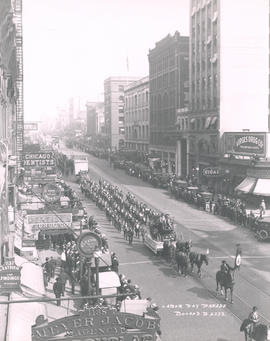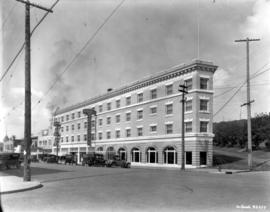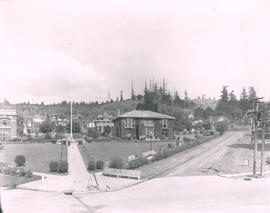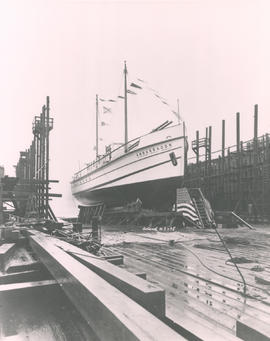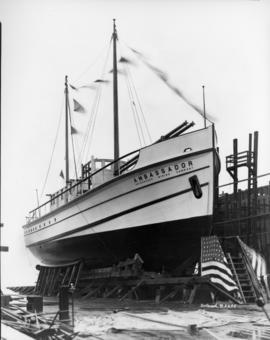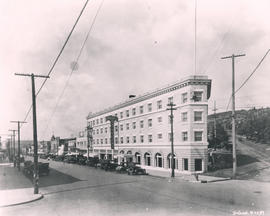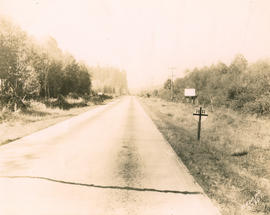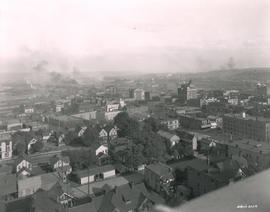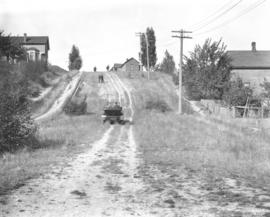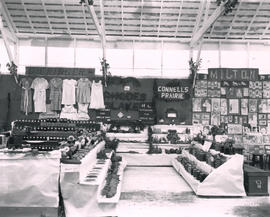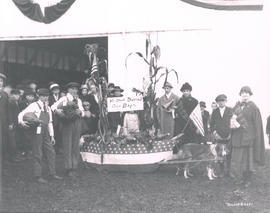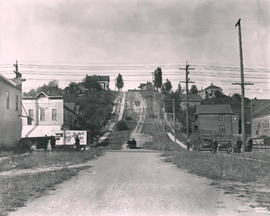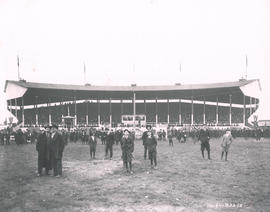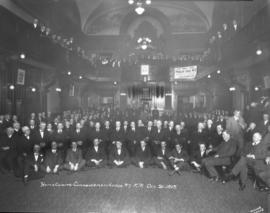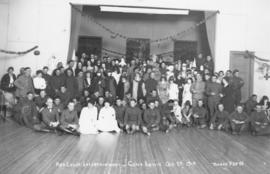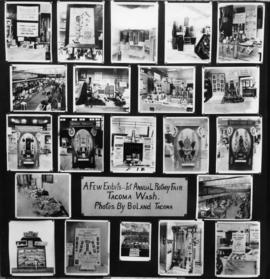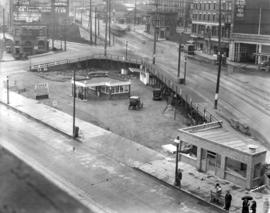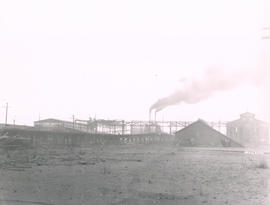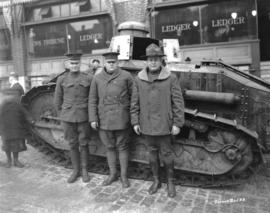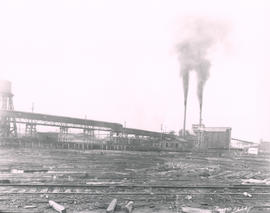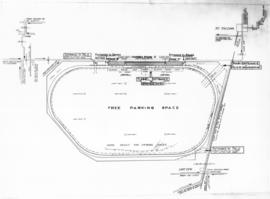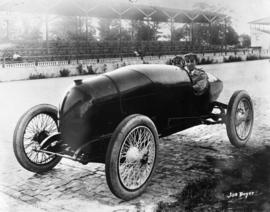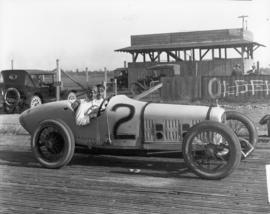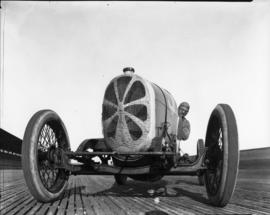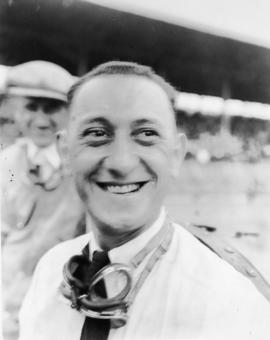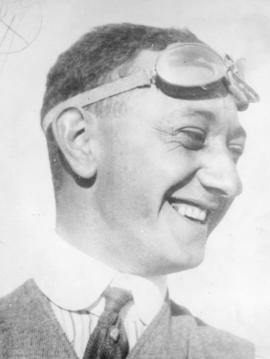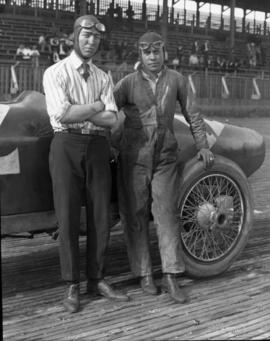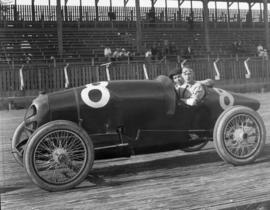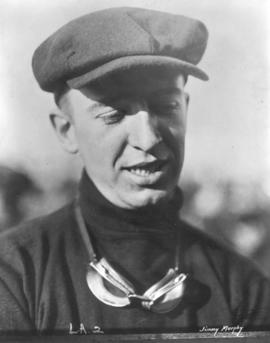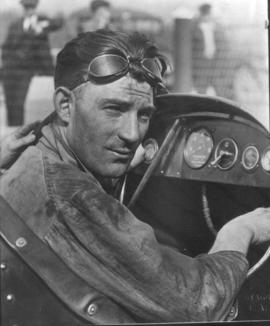- Item
- 1919-09-01
Part of Marvin Boland Photographs
More than 6,000 Tacoma union men took part in the Labor Day Parade down Pacific Ave. in September of 1919. The parade of Tacoma organized labor through downtown began at the City Hall, 625 Commerce, and proceeded south on Pacific Ave. Charles Richmond, a labor leader, led the parade as marshall mounted on a horse; he was followed by the Railway Brotherhood, policemen and firemen. Next came this float from the Teamsters, an old-time coach mounted on a horse drawn wagon. It was decorated with a banner reading, "Does the man who delivers your goods belong to the Teamsters Chauffeurs Union #313." Union 313 consisted of Tacoma drivers from many industries. Many union members followed the float carrying American flags. One of the goals of the Labor Day celebration was to reach the $30,000 goal set for the Labor Temple building fund. Labor Temple buttons were being sold to raise the funds. (T. Times 9/1/1919, pg. 1) G38.1-018 TPL-10094
Parades & processions--Tacoma--1910-1920; Labor unions; International Brotherhood of Teamsters, Local 313 (Tacoma); Floats (Parades)--Tacoma--1910-1920;
